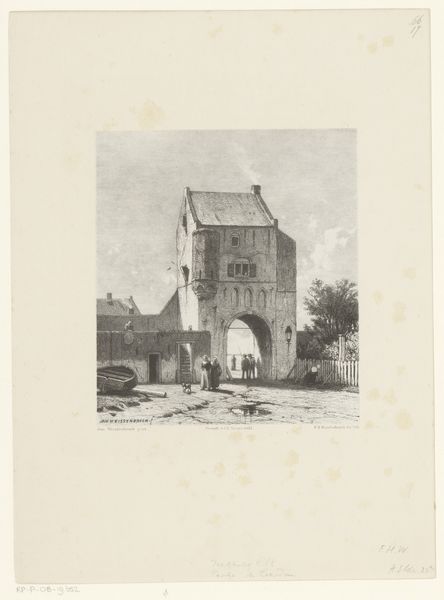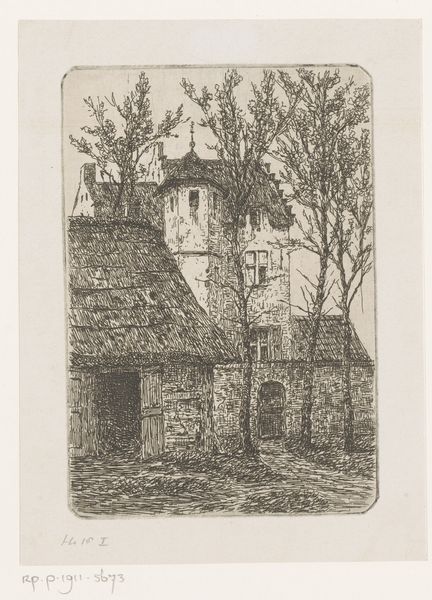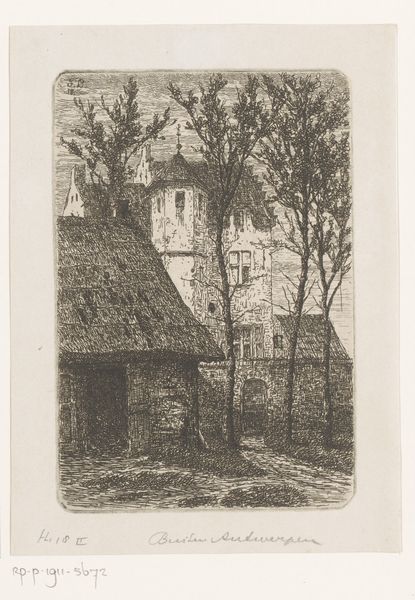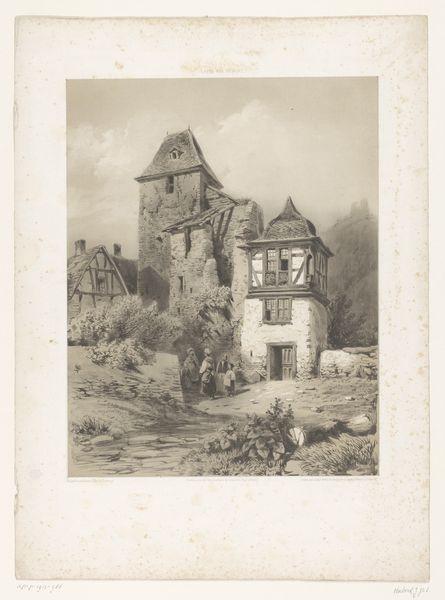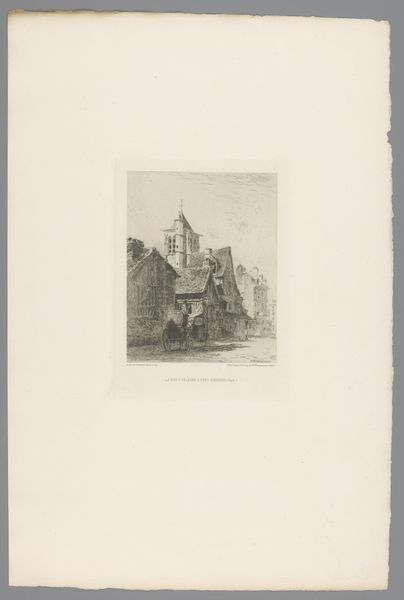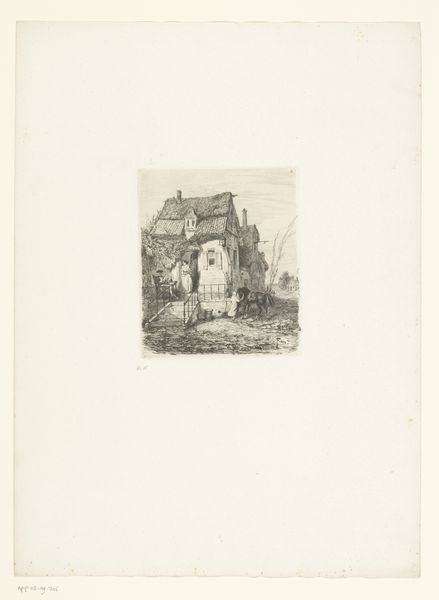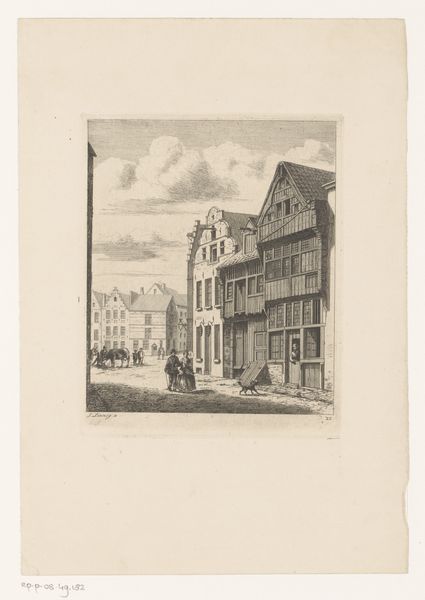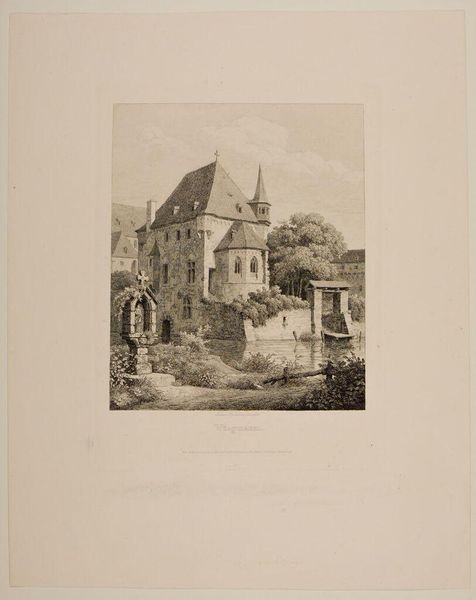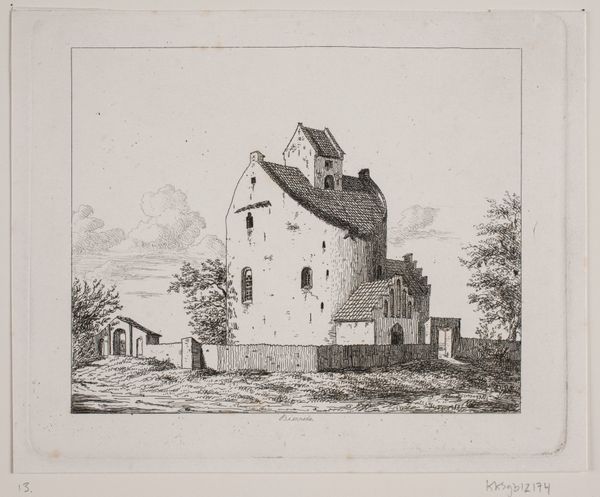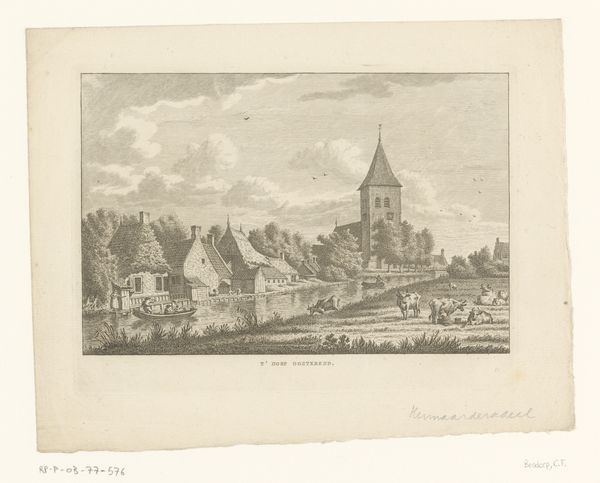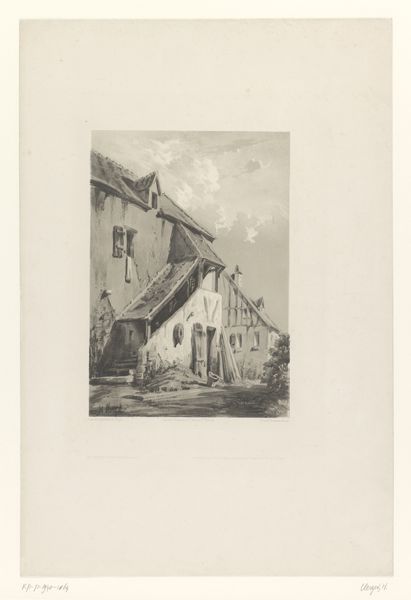
drawing, print, etching, paper
#
drawing
# print
#
etching
#
landscape
#
paper
#
cityscape
#
realism
Dimensions: height 116 mm, width 74 mm
Copyright: Rijks Museum: Open Domain
This is Willi Foerster's "Gezicht op de Weisserturm, te Rothenburg ob der Tauber", made sometime in the first half of the 20th century. It's a delicate etching that captures a street view in Rothenburg, Germany. Foerster lived through both World Wars, witnessing firsthand the massive shifts in German society. His identity as a German artist was undoubtedly shaped by these experiences. It's impossible to ignore the weight of history when looking at this cityscape, especially in light of the rebuilding efforts after the wars. Did he capture Rothenburg as a way to document the city and its people? It's also interesting to consider the gendered aspect of cityscape art. Historically, it has often been a male-dominated genre. What does it mean for Foerster to focus on urban views in a world that often confined women to the domestic sphere? The image evokes a sense of quiet resilience. It’s a glimpse into a city marked by time, yet still standing. How does this image make you feel about the passage of time, and the endurance of community?
Comments
No comments
Be the first to comment and join the conversation on the ultimate creative platform.
